WWII NORMANDY July 10th, 1944 James L. Dirks 987th Field Artillery Battalion (Third Army) - ETO Combat Letter
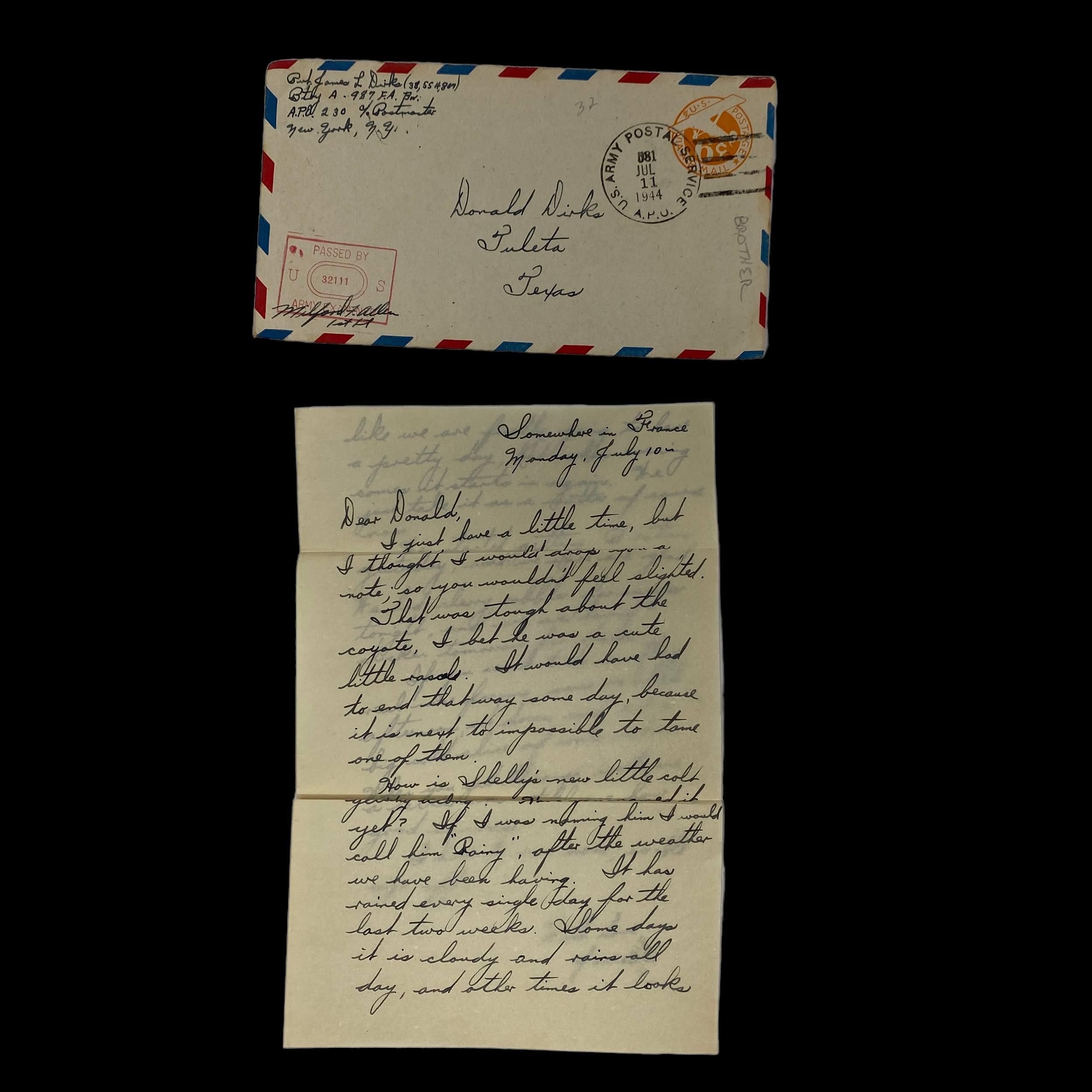
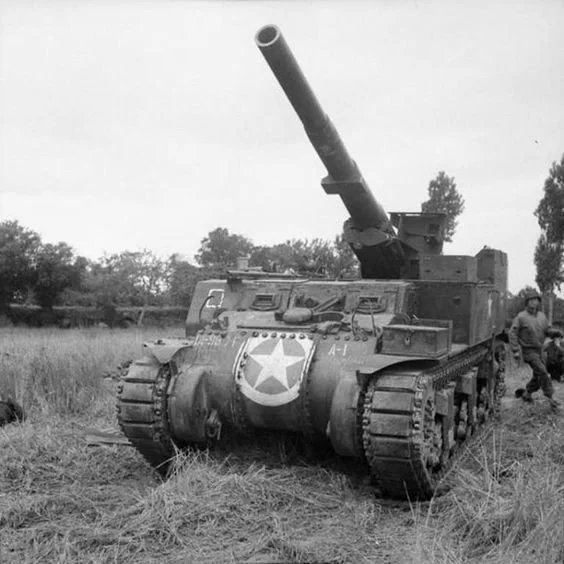
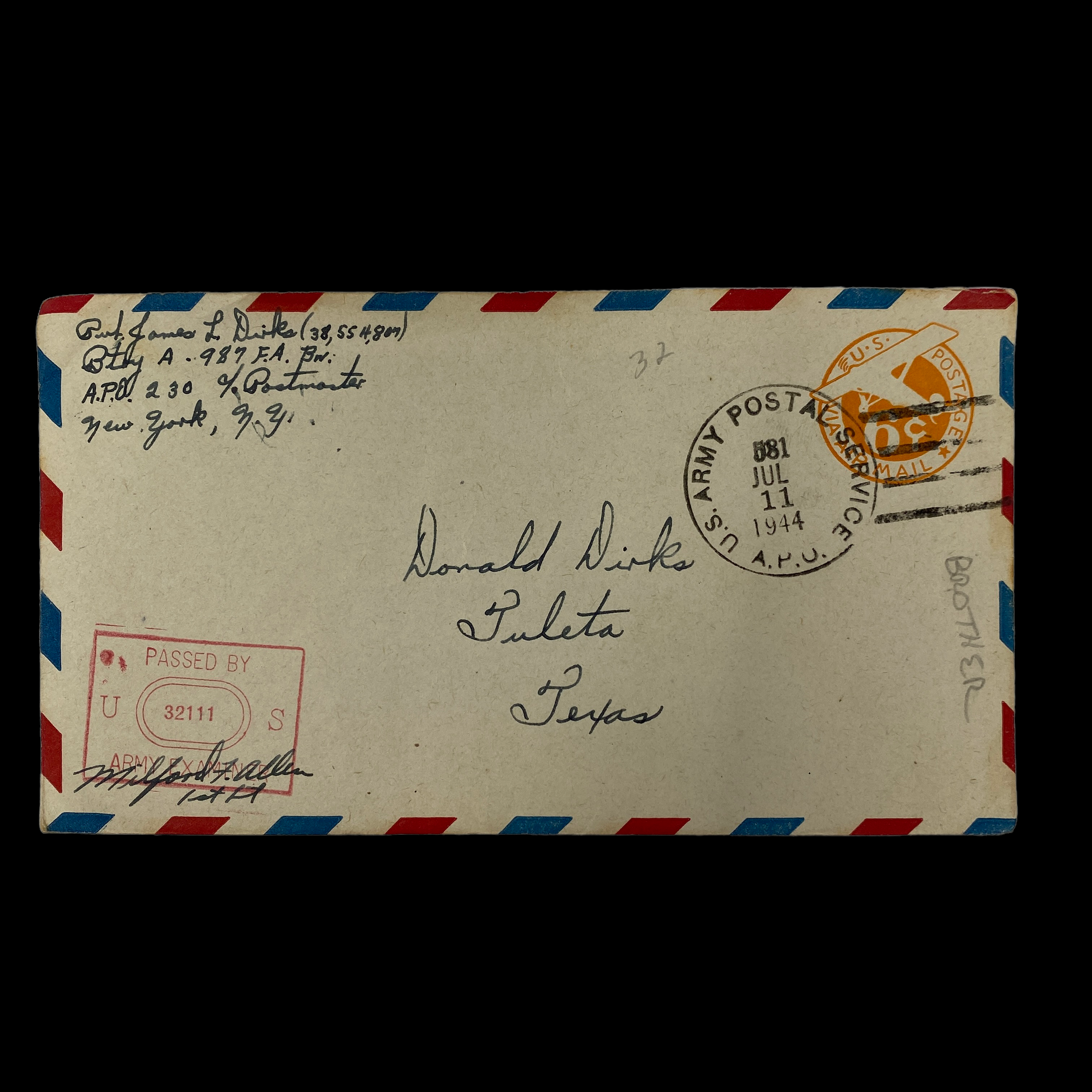
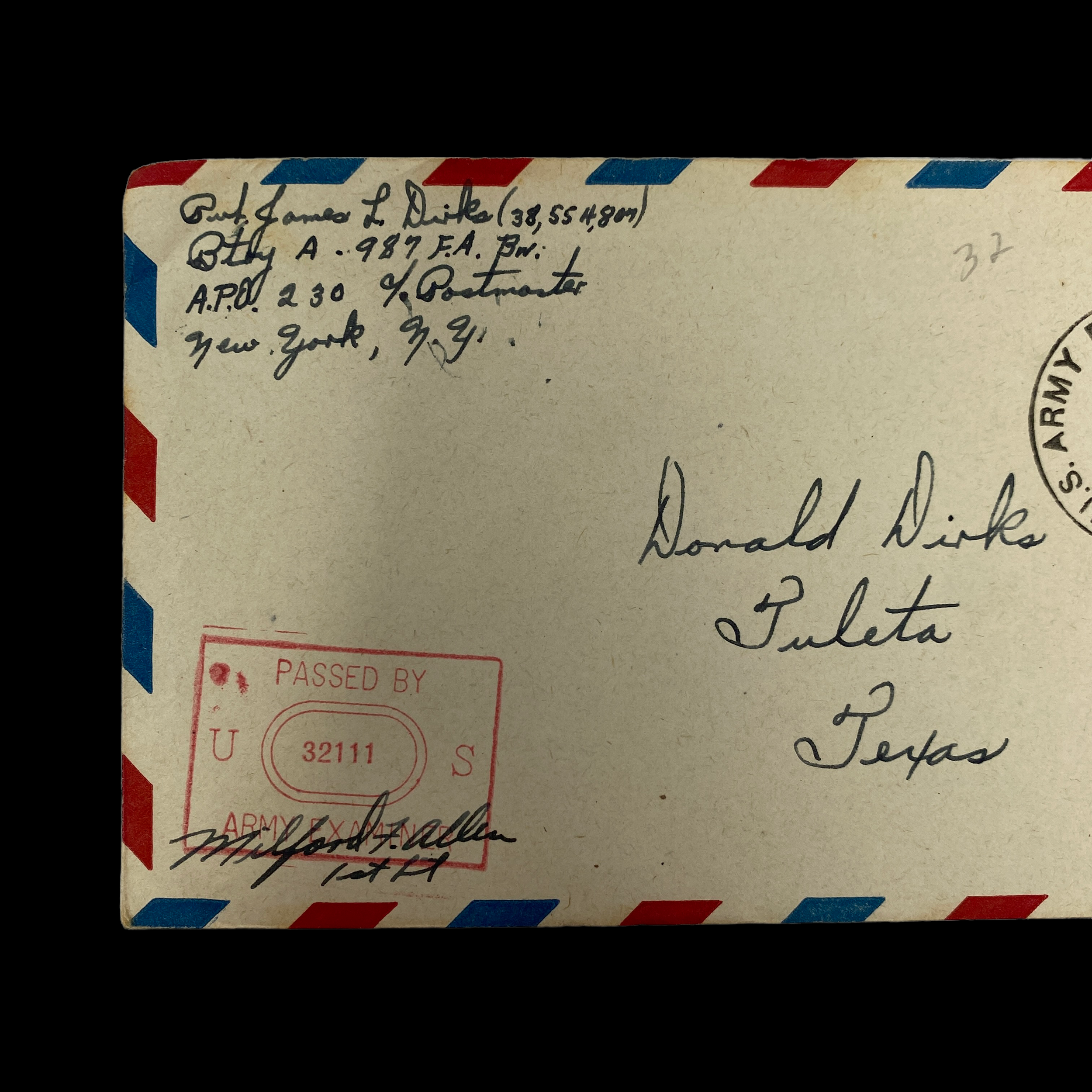

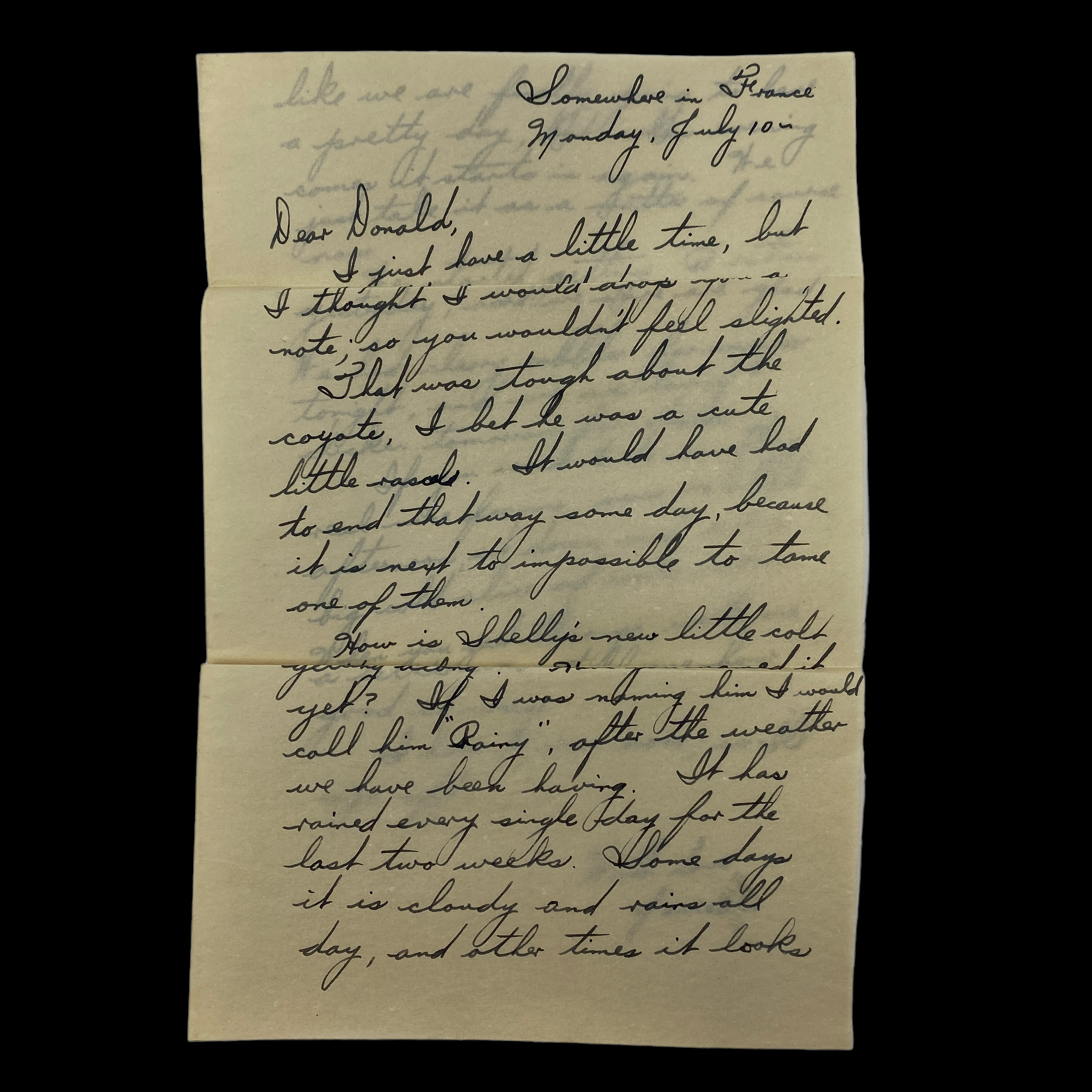
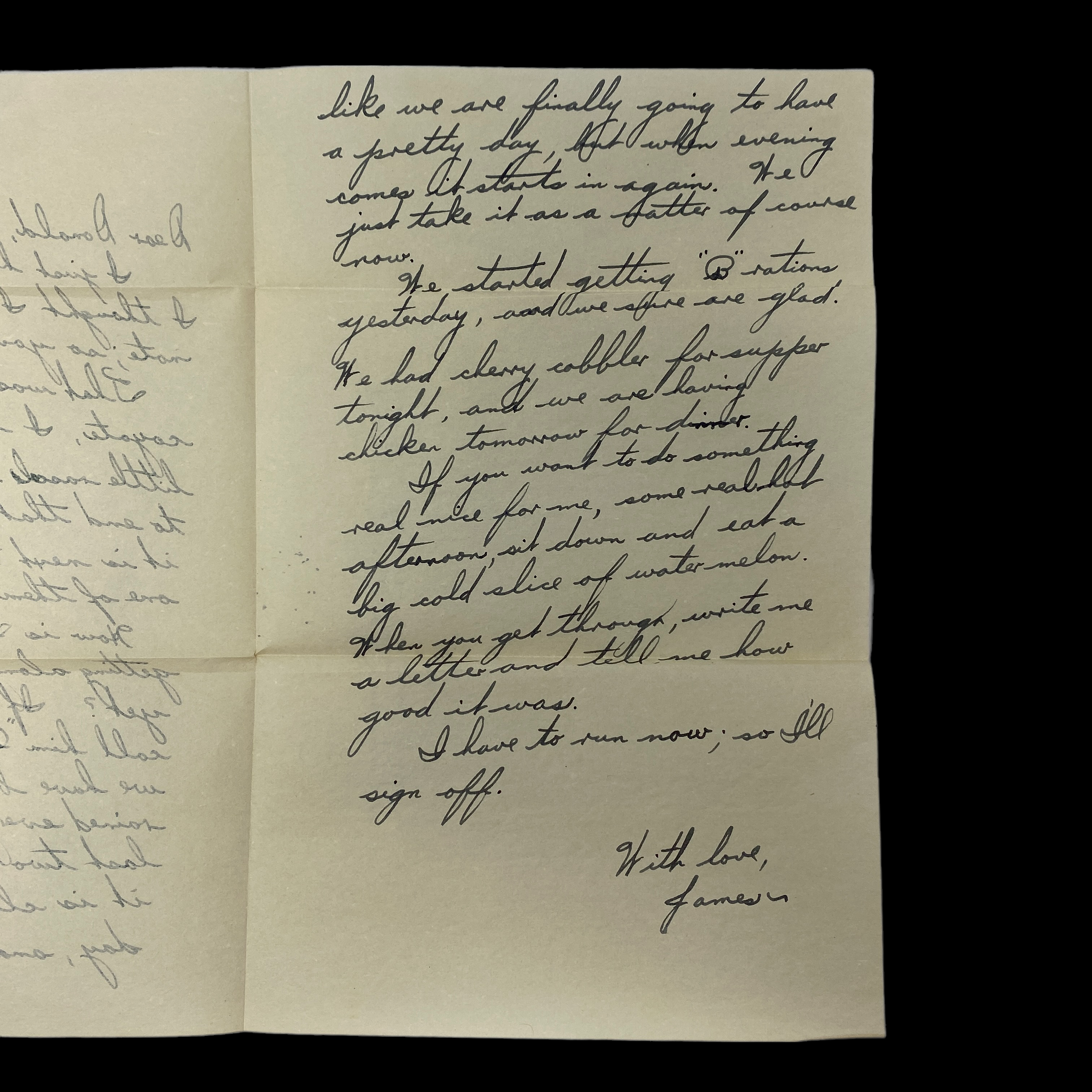
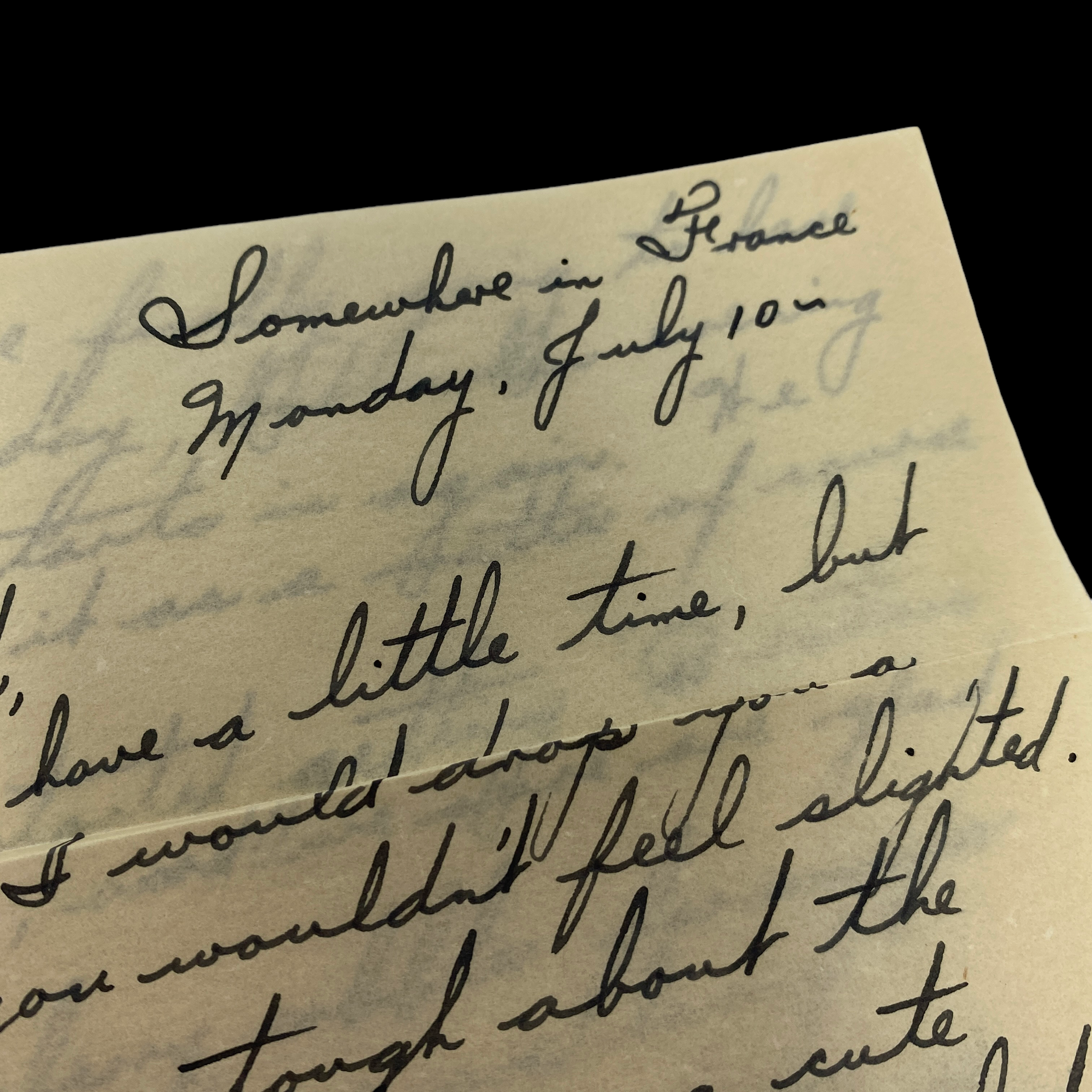

WWII NORMANDY July 10th, 1944 James L. Dirks 987th Field Artillery Battalion (Third Army) - ETO Combat Letter
Comes with hand-signed C.O.A.
This incredible and museum-grade original WWII combat ETO letter was written by artilleryman PCF. James L. Dirks (38554807) of the 987th Field Artillery Battalion (Battery A). During his service as a field artilleryman PCF. Dirks provided Alled artillery fire support during the June 6th, 1944 D-Day invasion of Normandy, Allied forces break through at St Lo, the Allied liberation of Paris, the Battle of the Bulge, the Rhine River crossing, the Battle of the Ruhr Pocket, and the capture of Nuremberg. By the end of WWII and the German surrender PFC. Dirks was a highly decorated soldier serving under General George S. Patton’s 3rd Army.
This original European Theater combat letter would make an amazing addition to any World War II or rare letter collection.
Combat History of the 987th Field Artillery during WWII:
The 987th Field Artillery Battalion was a unit of the United States Army that served during World War II. The battalion was activated on February 1, 1943, at Camp Barkley, Texas, as part of the 987th Field Artillery Group. The 987th Field Artillery Battalion was composed of four batteries: A, B, C, and HQ.
The 987th Field Artillery Battalion trained at Camp Barkley until August 1943, when they were shipped to the European Theater of Operations. The unit landed in Liverpool, England, on September 2, 1943, and was assigned to the Third Army, under the command of General George S. Patton.
The 987th Field Artillery Battalion saw its first combat action on June 6, 1944, during the Normandy Invasion, also known as D-Day. The unit supported the 4th Infantry Division in the assault on Utah Beach, and provided fire support for the division as it pushed inland. The 987th Field Artillery Battalion also provided fire support for the division during the Battle of Saint-Lô in July 1944.
After the Normandy Campaign, the 987th Field Artillery Battalion supported the 4th Infantry Division during the liberation of Paris, and the drive towards the German border. The unit was then involved in the Battle of the Bulge, where it provided fire support for the division as it fought to push the Germans back.
In March 1945, the 987th Field Artillery Battalion crossed the Rhine River and supported the 4th Infantry Division as it advanced into Germany. The unit was involved in the Battle of the Ruhr Pocket, and provided fire support for the division as it captured the cities of Essen and Duisburg. The 987th Field Artillery Battalion also supported the division during the capture of the city of Nuremberg in April 1945.
The 987th Field Artillery Battalion was inactivated on December 20, 1945, at Camp Kilmer, New Jersey. The unit was awarded the Presidential Unit Citation for its actions during the Normandy Campaign, and several of its soldiers were awarded individual decorations, including the Silver Star and Bronze Star, for their actions during the war.
In conclusion, the 987th Field Artillery Battalion played a crucial role in the European Theater of Operations during World War II. The unit was activated in 1943, and served in the Third Army under the command of General George S. Patton. The 987th Field Artillery Battalion provided fire support for the 4th Infantry Division during many of the major battles in Europe, including the Normandy Invasion, the liberation of Paris, and the Battle of the Bulge. The unit was inactivated in December 1945, and was awarded the Presidential Unit Citation for its actions during the Normandy Campaign.